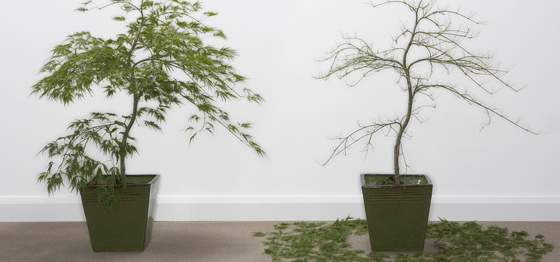- MENU
- HOME
- SEARCH
- WORLD
- MAIN
- AFRICA
- ASIA
- BALKANS
- EUROPE
- LATIN AMERICA
- MIDDLE EAST
- United Kingdom
- United States
- Argentina
- Australia
- Austria
- Benelux
- Brazil
- Canada
- China
- France
- Germany
- Greece
- Hungary
- India
- Indonesia
- Ireland
- Israel
- Italy
- Japan
- Korea
- Mexico
- New Zealand
- Pakistan
- Philippines
- Poland
- Russia
- South Africa
- Spain
- Taiwan
- Turkey
- USA
- BUSINESS
- WEALTH
- STOCKS
- TECH
- HEALTH
- LIFESTYLE
- ENTERTAINMENT
- SPORTS
- RSS
- iHaveNet.com: Home & Garden

Great Ways to Kill Your Houseplants
by Lynn Coulter
Dead houseplants got you down? Here are the 5 most common plant killers -- plus how to keep your plants healthy
Poor, innocent houseplants. African violets brighten our tabletops, English ivies freshen the air in our living rooms. And Peace lilies (Spathiphyllums) decorate dark corners.
What do we do in return for the beauty and pleasure they give us? We kill them.
Not intentionally, of course. Sometimes we neglect them. Other times we're guilty of loving them to death, giving them more attention (usually water) than they require. Still others starve to death from lack of fertilizer, or slowly strangle in outgrown pots.
Death by brown thumb is never a pretty sight.
Here are the top five most common way to commit planticide -- and how to avoid it in the future.
Step 1: Overwater
We mean well when we water that new cactus every single day and twice on Saturdays. Overwatering is an easy trap to fall into, and it's probably the No. 1 cause of houseplant murder. Few plants can survive constantly soggy roots, so wait until the soil in the pot feels slightly dry before you give your plant a refreshing drink. After the water drains through the pot, dump any excess from the plant's saucer. If you can't get the hang of how often you should water, it's worth investing in an automatic indoor watering system. Bonus: The system will pinch-hit for you while you're on vacation, so you won't come home to find a desert landscape on your windowsill. Tumbleweeds aren't a good look for anyone.
Step 2: Keep Your Plants In Their Original Pots. Forever
Remember how you kept outgrowing your shoes when you were young? You're not wearing the same tennis shoes you had in high school, so remember that plants are also living, growing things. After a while, they'll outgrow the pots they came in. Don't let them become root bound. Once a year, lift your plants out of their pots and check their roots. Have the roots grown into a tightly wound ball? If so, gently knock off the soil and unwind them. Then replant, using a slightly larger pot and fresh soil.
Step 3: Give Your Plants Direct Sun
Plants need light to grow, so the more the better, right? Not quite. It's not healthy for people to be exposed to direct sunlight all day every day, and it's not good for most houseplants either. Read the tags that come with your plants. If they need a southern exposure, give them a sunny window, but don't place them close to the glass, where soaring temperatures can burn them. If your plant likes low light, try a north-facing window. Many other houseplants will enjoy an eastern exposure, where the light is typically bright but cool.
Step 4: Put Up With a Few Pests
You might have to put up with a pest in the office cubicle next to you, but don't let things get out of hand at home. A few bugs can multiply quickly and spread to the rest of your indoor plant collection, so go ahead and treat a problem when you spot it. Try knocking the pests off with a gentle spray of water from the kitchen faucet, or check with your local nursery for the right plant spray for your problem.
Step 5: Never Fertilize
While it's true that houseplants grow more slowly than most outdoor plants, watering will eventually cause the nutrients to leech out of the soil. Replace them with a houseplant fertilizer made especially for indoor growing conditions. You can use a diluted, water-soluble fertilizer, applied each time you water, or convenient fertilizer stakes that you insert into the soil (check your local plant store).
Lynn Coulter is an Atlanta-based writer and speaker, and the author of
Gardening with Heirloom Seeds: Tried-and-True Flowers, Fruits, and Vegetables for a New Generation.
She lives with her family in Georgia, where her son attends Georgia Tech (Go Jackets!). Her two rescue doggies, Molly and Miss Paws, love to dig in her garden.
AUTOS | HOBBIES | EDUCATION | FAMILY | FASHION | FOOD & RECIPES | HOME DECOR | RELATIONSHIPS | PARENTING | PETS | TRAVEL | WOMEN
Article: Copyright ©,
Home & Garden: "Great Ways to Kill Your Houseplants"